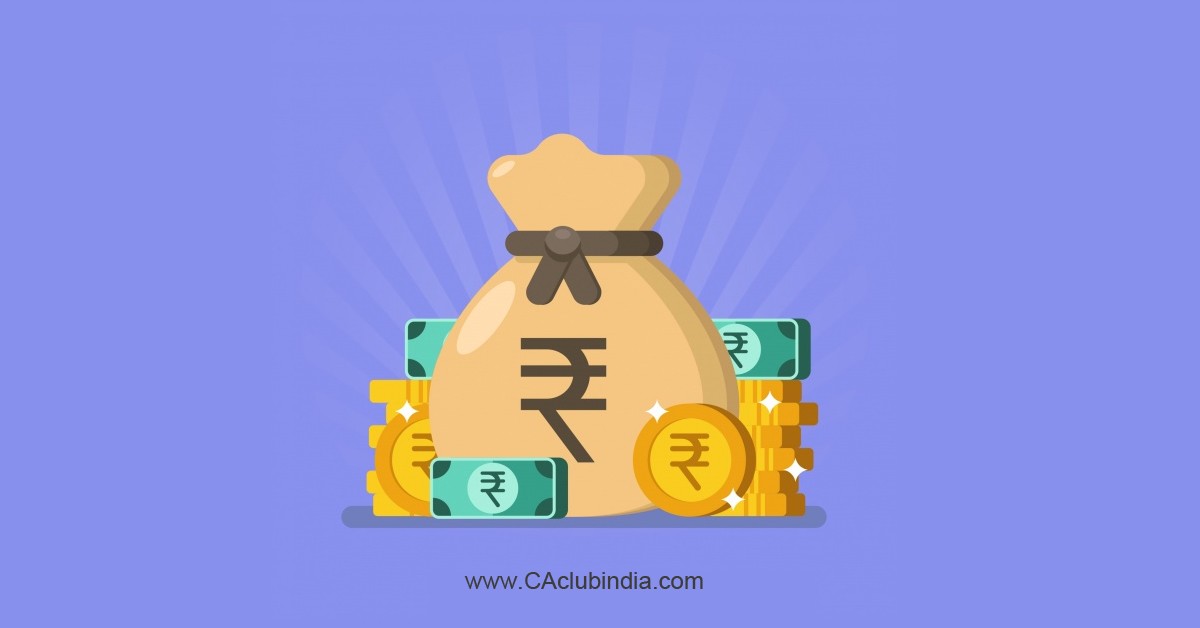Introduction
As the due dates are not so far to file your Income Tax returns for the FY 23-24, as an individual taxpayer one cannot contribute that much in form of taxes on their earnings. Hence government has provided various Tax benefits, Exemptions, Deductions & reliefs to an individual taxpayer in order to reduce their Tax liability. Let's understand some of the ways to reduce your Tax liability.

Table of Contents
- Introduction
- Latest Amendment made under Finance Act 2023
- Old regime Vs New Regime
- Ways to save Taxes on salary exceeding 5 Lakhs
- Exemptions & Deductions allowed under new regime
- Rebate us 87A under both regimes
- How to choose correct regime to minimize your tax liability?
- Computation of Tax liability
- Conclusion
Latest Amendment made under Finance Act 2023
As New Tax Slabs are introduced us 115BAC. Accordingly, now the basic exemption limit is Rs. 3,00,000. Also Rebate under Section 87A is made applicable on Income up to Rs 7,00,000. Thus, if you opt for the New Tax Regime, those Individuals having Income less than Rs. 7,00,000 will have to pay Zero Tax Liability.
Old regime Vs New Regime
Tax Slabs:
| Tax Slab | FY 2023-24 Tax Rate (Old tax regime) | Tax Slab | FY 2023-24 Tax Rate (New tax regime) |
| Up to Rs 2,50,000 | Nil | Up to Rs 3,00,000 | Nil |
| Rs 2,50,000 - Rs 5,00,000 | 5% | Rs 3,00,000 - Rs 6,00,000 | 5% |
| Rs 5,00,000 - Rs 10,00,000 | 20% | Rs 6,00,000 - Rs 9,00,000 | 10% |
| Rs 10,00,000 and beyond | 30% | Rs 9,00,000 - Rs 12,00,000 | 15% |
| NA | NA | Rs 12,00,000 - Rs 15,00,000 | 20% |
| NA | NA | Rs 15,00,000 and beyond | 30% |
| Sr. no | Particulars | Taxability under old regime | Taxability under new regime (115BAC) |
| 1 | Basic Salary | Fully Taxable | Fully Taxable |
| 2 | HRA | Exempt us 10(13A) to the lowest of: | Fully Taxable |
| (i) Actual HRA received | |||
| (ii) 50%(Who lives in metro cities)/40% of (salary + DA) | |||
| (iii) Rent paid - 10% of Salary | |||
| 3 | Commission | Fully Taxable | Fully Taxable |
| 4 | Children Education allowance | Exempt up to Rs. 100 per month per child maximum 2 child | Fully Taxable |
| 5 | Children hostel Allowance | Exempt up to Rs. 300 per month per child maximum 2 child | Fully Taxable |
| 6 | Transport allowance | Exempt: Rs. 3200 pm only in case of blind/deaf & dumb/handicapped E'ee | Exempt: Rs. 3200 pm only in case of blind/deaf & dumb/handicapped E'ee |
As a taxpayer it is important to know about the exemptions & deductions available for the taxation purpose let's check out some standard exemptions & deductions allowed under both regimes
Exemptions & Deductions allowed under new regime
Unlike the Old tax regime, the new tax regime has minimal scope for claiming deductions or exemptions. Deductions that are available in the new tax regime are as follows.
| Sr. no | Particulars | Old regime | New regime (115BAC) |
| 1 | Income level to claim rebate | up to 5 Lakhs | up to 7 Lakhs |
| 2 | Rebate us 87A | Rs. 12,500 | Rs. 25,000 |
| 3 | Standard Deduction us 16 | Rs. 50,000 | Rs. 50,000 |
| 4 | Entertainment allowance | Allowed | Not allowed |
| 5 | Professional Tax | Allowed | Not allowed |
| 6 | Interest deduction us 24b (Self occupied property) | Allowed | Not allowed |
| 7 | Interest deduction us 24b (Let out property) | Allowed | Allowed |
| 8 | Employee's own contribution | Allowed | Not allowed |
| 9 | Employer's contribution | Allowed | Allowed |
| 10 | 80C (EPF/LIC/ELSS/PPF etc.) | Allowed | Not allowed |
| 11 | 80D(Medical insurance premium) | Allowed | Not allowed |
| 12 | 80U(Disable Individual) | Allowed | Not allowed |
| 13 | 80E(Interest on education loan) | Allowed | Not allowed |
| 14 | 80EEB(Interest on electric vehicle loan) | Allowed | Not allowed |
| 15 | 80G(Donations) | Allowed | Not allowed |
| 16 | 80TTA & 80TTB (Bank Interest) | Allowed | Not allowed |
| 17 | Other chapter VI-A deductions | Allowed | Not allowed |
| 18 | Gift up to Rs. 50,000 | Allowed | Allowed |
Rebate us 87A under both regimes
Conditions to claim:
- Only Resident Individual can claim
- Senior citizens above 60 years and up to 80 years of age are eligible to claim rebates under Section 87A
- Super senior citizens above 80 years are not eligible to claim the rebate.
- The rebate is applicable to the total tax amount before applying 4% health and education cess
- The total income after subtracting the deductions should not exceed the threshold limit of Rs. 5 lakhs under the old regime or Rs. 7 Lakhs for FY- 2023-24 under the new regime

Let's Understand how to calculate rebate who have opted new regime
| Particulars | Amount | Amount | Amount |
| Total Taxable Income | 5,00,000 | 7,00,000 | 8,00,000 |
| Less: Basic Exemption Limit | 3,00,000 | 3,00,000 | 3,00,000 |
| Taxable Income after Basic exemption limit | 2,00,000 | 4,00,000 | 5,00,000 |
| Tax Payable | 10,000 | 25,000 | 35,000 |
|
Less: Rebate under section 87A Lower of
|
10,000 |
25,000 |
NIL |
| Balance Tax Payable | NIL | NIL | 35,000 |
| Add: Health & Education Cess @ 4% | - | - | 1,400 |
| Final Tax payable | - | - | 36,400 |
How to choose correct regime to minimize your tax liability?
While deciding about the regime it is important to take into account all the exemptions & deductions that available under old regime & new regime as discussed above. After deducting all relevant deductions & exemptions & you will get your Net total income under both regimes & now it is easy to compare that under which regime your taxability is minimal
It is important to choose the regime logically as in order to deduct TDS on salary an employee have to communicate the regime, he, wish to opt
An Assessee should also consider his current year losses if any like loss from house property, capital gains, or business & profession as it will affect your net total income
Let's understand practically with the help of an example that how actual computation can be done under both regimes.
Illustration:
Mr. X has following earnings per month
Basic Pay: 50,000.
Dearness allowance: Rs. 2,000.
House rent allowance: Rs. 2,00,000 (Gross).
Bonus: Rs. 1,00,000.
Professional tax paid: 2400.
Mr. X had paid interest on self-occupied house & having loss from self-occupied house of Rs. 1,00,000 & is eligible to claim 80C of Rs. 1,00,000 & 80D of Rs. 25,000.
Mr. X is residing in Delhi & paying rent of Rs. 18,000 per month.
Computation of tax liability of Mr. X for the FY 23-24 |
||||
|
Old Regime |
New Regime |
|||
|
Particulars |
Amount |
Amount |
Amount |
Amount |
|
Income From Salaries |
||||
|
Basic Salary (50,000*12) |
6,00,000 |
6,00,000 |
||
|
Dearness Allowance (2000*12) |
24,000 |
24,000 |
||
|
Bonus |
1,00,000 |
1,00,000 |
||
|
House Rent allowance received |
2,00,000 |
2,00,000 |
||
|
Less: Exempt us 10(13A)(Least of the following) |
1,53,600 |
46,400 |
NA |
2,00,000 |
|
(i)Actual received |
2,00,000 |
|||
|
(ii) 50% Salary(50,000+2,000*12) |
3,12,000 |
|||
|
(iii)Rent paid (18000*12) minus 10% of salary (50,000+2,000)*12 |
1,53,600 |
|||
|
Gross salary |
7,70,400 |
9,24,000 |
||
|
Less: Standard deduction us 16(ia) |
(50,000) |
(50,000) |
||
|
Less: Professional Tax paid us 16(iii) |
(2,400) |
NA |
||
|
Net Taxable Salary |
7,18,000 |
8,74,000 |
||
|
Income From House Property |
||||
|
Loss from self-occupied house us 24b |
(1,00,000) |
NA |
||
|
Gross Total Income |
6,18,000 |
8,74,000 |
||
|
Less: Deductions under chapter VI-A |
||||
|
80C |
(1,00,000) |
NA |
||
|
80D |
(25,000) |
NA |
||
|
Net Total Income |
4,93,000 |
8,74,000 |
||
Computation of Tax liability
| Tax Slab (Old regime) | Rate | Amount |
| Up to Rs 2,50,000 | Nil | - |
| Rs 2,50,000 - Rs 5,00,000 | 5% | 12,150 |
| Rs 5,00,000 - Rs 10,00,000 | 20% |
- |
| Above Rs.10,00,000 | 30% | - |
| Total | 12,150 | |
| Less: Rebate us 87A | (12,150) | |
| Net Tax Liability | NIL |
| Tax Slab (New Regime) | Rate | Amount |
| Up to Rs 3,00,000 | Nil | - |
| Rs 3,00,000 - Rs 6,00,000 | 5% | 15,000 |
| Rs 6,00,000 - Rs 9,00,000 | 10% | 27,400 |
| Rs 9,00,000 - Rs 12,00,000 | 15% | - |
| Rs 12,00,000 - Rs 15,00,000 | 20% | - |
| Rs 15,00,000 and beyond | 30% | - |
| Total | 42,400 | |
| Health & Education Cess @4% | 1,696 | |
| Net Payable | 44,096 |
Conclusion
As in FY 23.24 New regime is default tax regime hence it is important to select which TAX regime is more beneficial. After observing above computation, we get basic idea that how an individual can save taxes by comparing both regimes & make their strategy to reduce his tax liabilities.






 CAclubindia
CAclubindia

